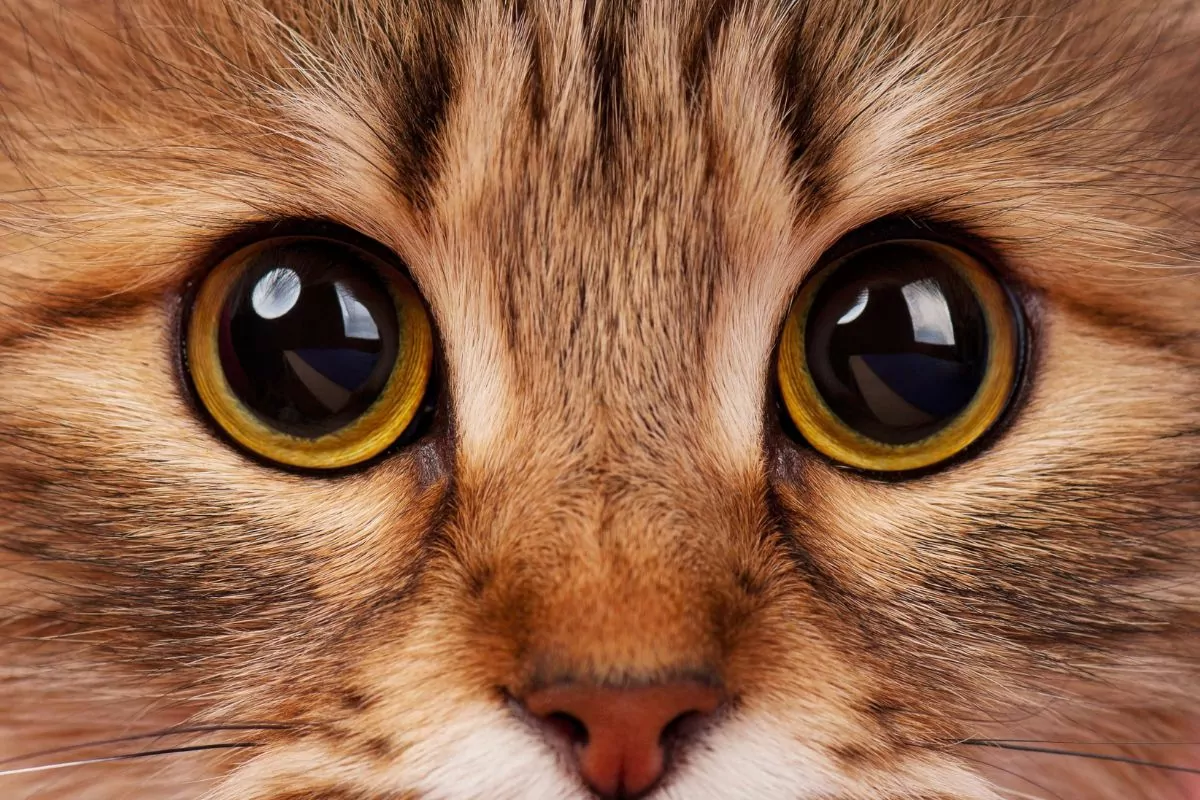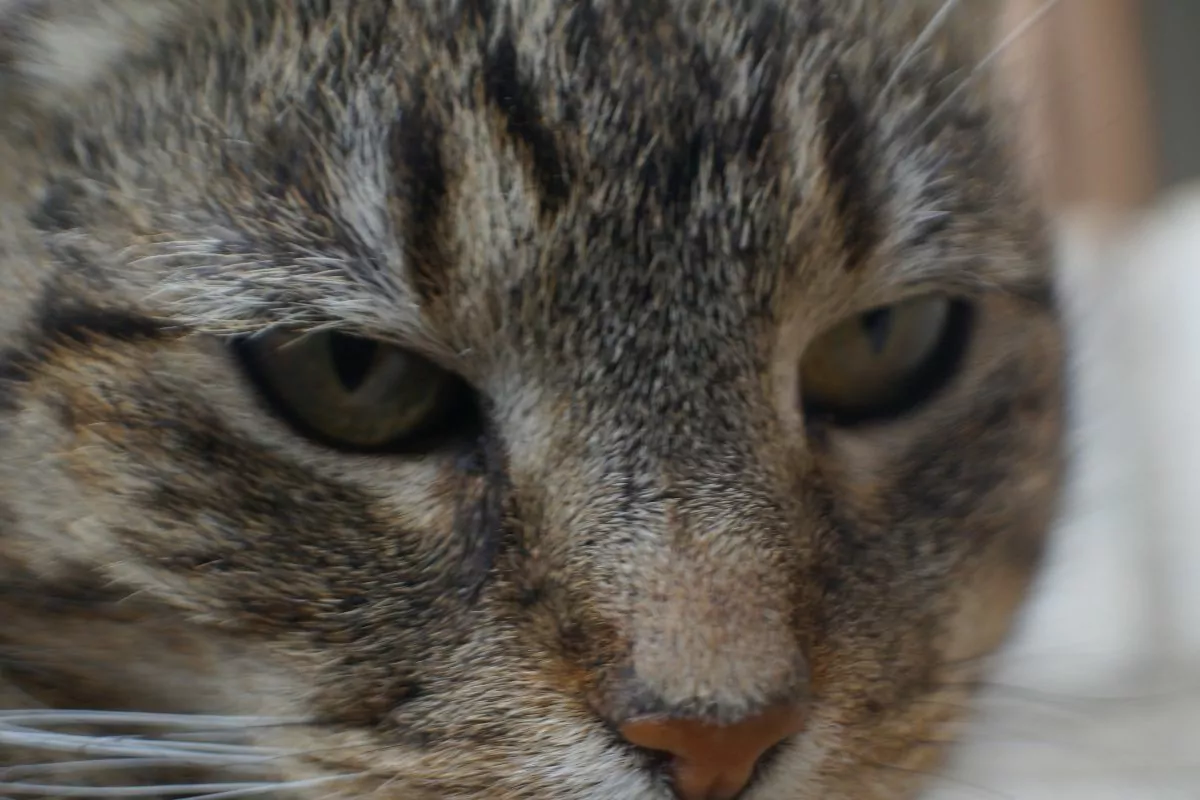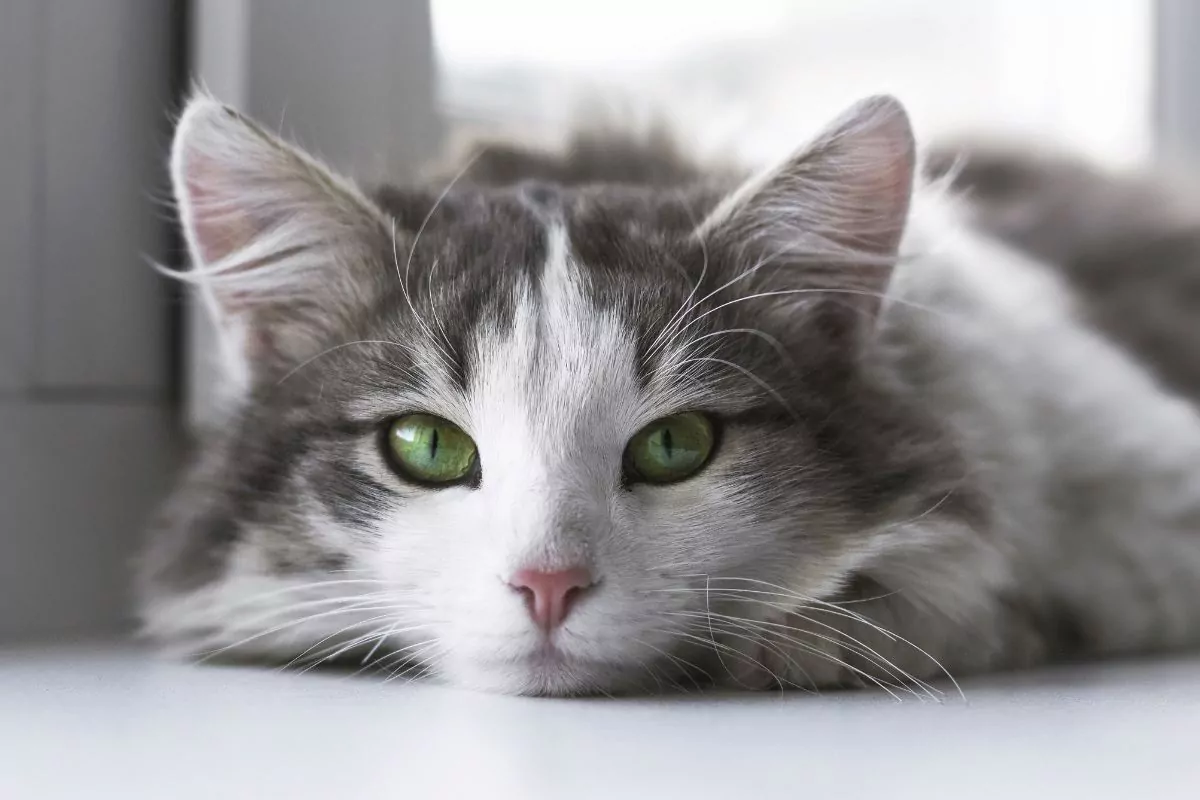Keratitis in Felines
Keratitis in cats is a common eye disease where the cornea becomes inflamed. Cat eye keratitis can, as the name suggests, affect a cat’s vision and make them temporarily blind. However, luckily it is, in most cases, easily treated, although surgery is necessary in some cases.
But how do you spot classic cat eye keratitis, and what is the best treatment for keratitis in cats? Keep reading to find out!

The Different Types of Feline Keratitis
Cat keratitis is quite a painful inflammatory eye disease that affects the cornea – the outer surface layer of the eye. The corneal layer consists of three layers of cells: the corneal epithelium, the corneal stroma, and the corneal endothelium.
Usually, these layers are transparent, but when the keratitis cat eyes start appearing, the layer can become clouded, limiting the cat’s vision.
Feline keratitis can affect cats of all ages and breeds, and so many possible causes make it difficult to prevent.
Depending on the cause of the inflammation, feline keratitis clinicians split keratitis into three types:
- Ulcerative keratitis.
- Non-ulcerative keratitis.
- Eosinophilic keratitis.
Sometimes feline keratitis occurs in conjunction with conjunctivitis – inflammation of the inner eye layer. It is, however, only sometimes the case. Conjunctivitis can occur independently of keratitis and vice versa. Read our article and find out about Conjunctivitis in Dogs.
Feline Eosinophilic Keratitis
What is it?
Eosinophilic keratitis in cats is a chronic inflammation of the cornea where eosinophils (a type of white blood cell) invade the cornea. In most cases, the infiltration of eosinophils will give the eyes a white or pink, chalky appearance. In some cases, it can also spread to the underside of the eyelids or the conjunctival membrane!
Eosinophils are part of the immune system and typically appear as a response to allergic reactions when parasites infiltrate the body.
But why do the eosinophils then infiltrate the eye without any parasites present? The short answer is that we don’t know yet!
Clinical signs/symptoms
The characteristic pink lesions on the eye are often the first thing cat owners notice. These changes may appear in one eye (unilateral) or both (bilateral). Lesions often appear at the edge of the cornea first. Afterward, they spread across the eye.
The eyelid may also become inflamed and thicken as a response to the condition, but it does not appear in all cases. As with other types of keratitis, squinting is likely to occur due to irritation, and the cat may also display signs of pain. Affected cats also often develop a thick discharge.
Diagnosis
Diagnosis is often possible on clinical signs alone. The final diagnosis requires corneal cytology, where a small sample of the eye surface is taken and placed under a microscope to assess the eosinophils’ presence.
Treatment
The best treatment of eosinophilic keratitis in cats is topical steroids or, in severe cases, oral or injectable steroids. If a cornea ulcer is already present, this will need treatment before starting steroid treatment.
Some veterinarians suggest using surgical methods to remove abnormal tissue from the cornea in severe cases. However, no clinical studies currently support using surgery to manage eosinophilic keratitis.
Checkups following treatment are often necessary to monitor how the cat responds to the therapy and adjust the treatment plan if needed. Most likely, your cat will need lifelong treatment as the condition is chronic.
Causes
The exact etiology (cause) of eosinophilic keratitis is still unknown. However, researchers have discovered that most cats suffering from the condition are also positive for the feline herpes virus. The herpes virus may therefore play a yet undiscovered role.
It is most common in younger cats below the age of five, and some anecdotal evidence suggests it is seen more frequently in neutered males.
Prognosis
Eosinophilic keratitis is a chronic condition, meaning cats will need life-long treatment and checkups to manage the condition. It is also likely that a lapse in treatment will lead to the worsening of the condition. However, with the correct treatment, it is, in most cases, possible to ensure a good quality of life and enough vision.
Ulcerative Keratitis in Cats
What is it?
Ulcerative keratitis is most often associated with the surface layer of the cornea – the corneal epithelium where it causes an erosion of the surface. It can progress deeper into the corneal tissue if not treated, causing a corneal ulcer. The tendency to develop tissues is where this type of keratitis gets its name from.
Clinical signs/symptoms
Symptoms associated with this type of keratitis depend on the cause and how long the cat has suffered from the keratitis. Early symptoms are often easy to miss as these most commonly include increased tear production, squinting, and eye rubbing. Some cats may also be more prone to avoid light or blinking more.
Discharge from the eyes is also often present. The ocular discharge will often be either green or white in color and can vary in amount.
You would also expect that tissue areas around the eyes will become red or swollen. If the keratitis has been there for a long while, blood vessels within the eye may also appear more clearly. Eventually, owners may even be able to see the hazy cornea.
Diagnosis
The condition is often diagnosed based on history and clinical symptoms. In many cases, a veterinarian may also perform a fluorescein eye coloring. If the corneal epithelium is damaged, the fluorescein color will stick to the underlying cells and appear macroscopically as a glowing green where the trauma is. But don’t worry; the green color will disappear again!
Treatment
Treatment depends on the cause and severity of the condition. If the condition responds to underlying disease, your veterinarian will address this primarily. In most cases, surgery is not necessary.
Your veterinarian is likely to prescribe eye drops, with or without antibiotics. In most cases, it will also be necessary for the cat to wear a cone or e-collar to prevent further tissue damage.
Surgery may sometimes be necessary to remove damaged and loose cells from the eye’s surface. This procedure is, of course, done under general anesthesia. Removing the cells may be enough, but sometimes, your cat may need a contact lens placed for a couple of weeks to ensure proper healing.
Causes
Several things can lead to ulcerative keratitis. Some of these include traumatic injuries of the eye, disease in the tear-producing glands, abnormal tear production, or primary disease of the cornea.
However, it can also be a response to an infectious disease, such as the feline herpes virus. This is also known as cat herpes keratitis.
Prognosis
If the corneal ulcer is only superficial, the eye drops and rest will, in most cases, be enough. Continued checkups with fluorescein dying will be necessary to confirm that the healing process is progressing.
The prognosis is more guarded if surgery is necessary, but most cats should recover in time.
Preventing recurring ulcerative keratitis in cats is not entirely possible, but applying lubricating eye drops can help some cats.

Feline Non-Ulcerative Keratitis
What is it?
Non-ulcerative keratitis is still inflammation of the cornea, but unlike the ulcerative type, no fluorescein stain will appear on the eye as there is no ulcer. There are different types of non-ulcerative keratitis.
One of the types is when the cornea and the sclera come together due to superficial inflammation. Another type is where part of the corneal tissue dies. The fluid build-up is likely to occur when the tissue dies, and pigmented lesions may appear.
Superficial inflammation can occur at any age, but the risk is higher in cats aged four to seven. The other type can occur at any age but tends to be more prevalent in certain cat breeds, including Persians, Siamese, and Burmese cats.
Clinical signs/symptoms
Clinical symptoms also depend on what type it is and what the cause is. With inflammation of the cornea, it can get infiltrated by eosinophils (just without an ulcer) and appear as white or pink chalky areas in the eye. Often this only affects one eye.
When herpesvirus is the primary cause, it often involves stroma. Here both or one eye is affected. The first symptom is often fluid build-up.
When part of the cornea tissue dies, it usually involves just one eye but can involve both. Here the first symptom will often be amber, brown, or black plaques near the center of the cornea. The tissue may also appear thickened, and blood vessels can become visible.
With all types, it is likely to see a level of discoloration of the cornea and pain and eye discomfort.
Diagnosis
Non-ulcerative keratitis is often possible to diagnose on clinical symptoms alone, but most will still perform a thorough physical and ophthalmologic (eye) examination to ensure everything is covered. Your veterinarian may also take a biopsy of the cornea.
Treatment
With non-ulcerative keratitis, the treatment plan can sometimes be slightly different compared to the other types of keratitis. If the cat primarily suffers from inflammation, radiation or cryotherapy may be part of a treatment plan to attempt to remove the dead tissue.
Surgical removal may be curative if the condition primarily takes the form of the cornea tissue dying, but there is a high risk of recidivism in many cases. Generally, the need for surgery is determined based on whether the cat is in significant discomfort.
Causes
As already mentioned, there are different types of non-ulcerative keratitis, which often have different etiologies. We do not fully understand why the cornea tissue tends to die in one type, but it there is a suspicion that it is partly due to previous trauma or long-term corneal irritation.
Non-ulcerative keratitis can also occur due to the herpes virus. However, scientists believe that non-ulcerative keratitis is an immune-mediated reaction to herpesvirus antigen rather than a direct effect of the viral infection. It commonly affects the middle layer of the cornea.
Prognosis
Although some types of treatment can be curative, it is more likely your cat will suffer from recurring corneal diseases where treatment will be necessary. After treatment, however, if your cat remains in remission with little to no clinical signs, fewer checkups may be required.
Cat owners should, however, be aware of the risk of cats eventually suffering from complete and permanent blindness.
Type
To summarise, there are three types of non-ulcerative keratitis. One is due to herpesvirus, the other one is inflammation of the cornea, and the last one is where part of the cornea tissue dies.
FAQ
What is Feline Herpes Virus?
Feline herpes virus (FHV) is a common disease amongst cats, with some suggesting up to 80% of cats have got the virus. Most cats recover from the initial infection but continue to carry and spread the disease. Some cats will have repeated flare-ups and recurrent symptoms, some of them likely to be related to the eyes.
Is Feline Keratitis Painful?
In most cases, keratitis is painful due to inflammation. If ulceration occurs, it becomes significantly more painful and should receive immediate veterinary care.
How to Tell if a Cat is in Pain?
It can be notoriously tricky to tell if a cat is in pain, and it can be near impossible if it is an outdoor cat. However, even if you can’t see the discharge coming from the eye, you are likely to be able to see one or both eyes are partly closed. Perhaps you can also see some redness around the eye or even in it.
Cats also tend to hide when they are in discomfort. So if your previously sociable cat suddenly stays far away from you, it might be time to give that kitten an extra checkup!
How is Feline Keratitis Diagnosed?
Most veterinarians can diagnose keratitis from clinical symptoms alone, but cytology may be necessary in some cases to confirm the diagnosis.
What Happens if Keratitis Goes Untreated?
Keratitis is, in most cases, painful, and cats should therefore receive treatment. However, treatment is also necessary as complications can otherwise occur. Complications can include abnormal growth of blood vessels into the cornea, and secondary bacterial infections, which can lead to perforation of the eye and sequestrum development.
Is Feline Keratitis Infectious?
Feline herpesvirus is infectious. However, keratitis is rarely infectious to other cats or humans. However, secondary bacterial infections or conjunctivitis can infect other cats, and cats should therefore be in isolation until a veterinarian rules out these.
Are Some Breeds More Prone to Keratitis?
No scientific studies have found any cat breed more likely to suffer from keratitis than others. However, some anecdotal evidence does suggest that some breeds are more prone to develop ulcerative keratitis.

Recap
Feline keratitis of any type can cause your cat significant discomfort and is something always to take seriously. Suppose you see any symptoms similar to the ones mentioned above, or do you suspect your cat may suffer from keratitis? In that case, it is time to give your veterinarian a call.
